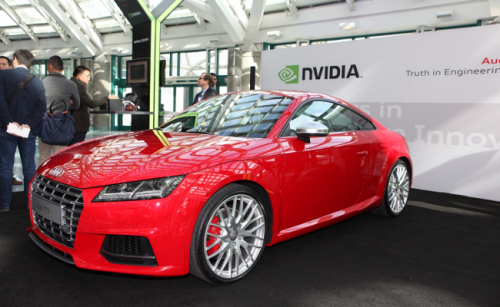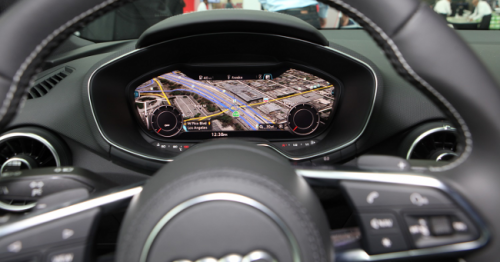Graphics acceleration enables in-car technology seen at LA auto show

At the Los Angeles Auto Show's Connected Car Expo Tuesday, NVIDIA and Audi showcased the latest innovations developed out of our partnership to deliver the auto industry's most advanced in-car technologies.
In its North American debut, the all-new Audi TT introduces the virtual cockpit. It's an entirely digital instrument cluster that drivers can customize to present the information they want most.
The virtual cockpit is powered by two NVIDIA Tegra 3 processors. One is at the heart of the car's modular computing system, called the MMX, located in the glovebox, which powers the infotainment and nav functions. The other is built into the TT's 12.3-inch TFT instrument panel, where it powers driver information systems, such as the speedometer and tachometer.
This innovative display presents all the information a driver would want at a glance with intuitive controls, so they can concentrate on enjoying their time behind the wheel.
This isn't the first time Audi has used the MMX. The system launched in the 2012 Audi A3, where it powered the Audi Connect infotainment system using a Tegra 2 processor. The system's modular architecture gave Audi the opportunity to improve their speed of product innovation.
This leads to Audi's second technology debut at the show. The new A6 and A7 sports sedans feature the latest version of the MMX, upgraded with a Tegra 3 processor.
This marks an incredible reduction in the amount of time it takes an automaker to upgrade the in-car technology hardware. Audi now leads the industry with a two-year hardware upgrade cycle, while most other automakers require five to seven years.

More is coming. Audi is working with NVIDIA to deliver their Piloted Driving features using the new Tegra K1 mobile supercomputer. Introduced at the International CES in January, the K1 will be at the heart of the Audi zFAS central computing module that will manage the semi-autonomous driving features.
On Tuesday, Audi announced that the Piloted Driving capability has been approved for production in the coming years due to the success they have had testing the NVIDIA-powered computing system.
It's just the latest example of how, working together, Audi and NVIDIA are redefining how technology can be used to improve the driving experience.
Provided by NVIDIA





















